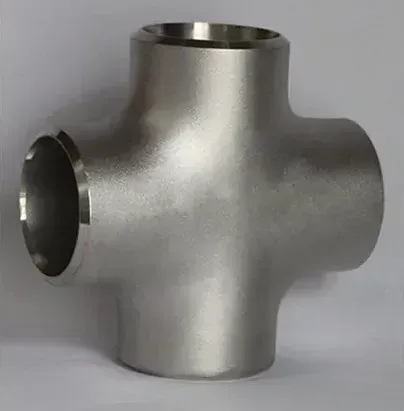-
Cangzhou Yulong Steel Co., Ltd.
-
Phone:
+86 13303177267 -
Email:
admin@ylsteelfittings.com
- English
- Arabic
- Italian
- Spanish
- Portuguese
- German
- kazakh
- Persian
- Greek
- French
- Russian
- Polish
- Thai
- Indonesian
- Vietnamese
- Zulu
- Korean
- Uzbek
- Hindi
- Serbian
- Malay
- Ukrainian
- Gujarati
- Haitian Creole
- hausa
- hawaiian
- Hebrew
- Miao
- Hungarian
- Icelandic
- igbo
- irish
- Japanese
- Javanese
- Kannada
- Khmer
- Rwandese
- Afrikaans
- Albanian
- Amharic
- Armenian
- Azerbaijani
- Basque
- Belarusian
- Bengali
- Bosnian
- Bulgarian
- Catalan
- Cebuano
- China
- China (Taiwan)
- Corsican
- Croatian
- Czech
- Danish
- Esperanto
- Estonian
- Finnish
- Frisian
- Galician
- Georgian
- Kurdish
- Kyrgyz
- Lao
- Latin
- Latvian
- Lithuanian
- Luxembourgish
- Macedonian
- Malgashi
- Malayalam
- Maltese
- Maori
- Marathi
- Mongolian
- Myanmar
- Nepali
- Norwegian
- Norwegian
- Occitan
- Pashto
- Dutch
- Punjabi
- Romanian
- Samoan
- Scottish Gaelic
- Sesotho
- Shona
- Sindhi
- Sinhala
- Slovak
- Slovenian
- Somali
- Sundanese
- Swahili
- Swedish
- Tagalog
- Tajik
- Tamil
- Tatar
- Telugu
- Turkish
- Turkmen
- Urdu
- Uighur
- Welsh
- Bantu
- Yiddish
- Yoruba

Dec . 16, 2024 09:27 Back to list
steel butt weld fittings
Understanding Steel Butt Weld Fittings A Comprehensive Overview
Steel butt weld fittings are integral components in piping systems, primarily used to connect pipes, valves, and other equipment in various industrial applications. They provide a secure and permanent joint by allowing the ends of two pipes to be welded together, promoting enhanced strength and durability in the system. This article delves into the essentials of steel butt weld fittings, their types, advantages, application areas, and installation considerations.
Types of Steel Butt Weld Fittings
Steel butt weld fittings are categorized into several types based on their design and purpose. The most common types include
1. Elbows These fittings change the direction of the flow in a piping system, typically available in angles of 90 and 45 degrees.
2. Tees Tees are used to create a branch from the main pipeline, connecting three pipes at a junction.
3. Reducers These fittings are used to connect pipes of different diameters, allowing for the transition from a larger pipe to a smaller pipe or vice versa.
4. Caps Caps fit onto the end of a pipe, closing it off completely.
5. Crosses A more complex fitting, crosses allow for the connection of four pipes at right angles to each other.
The selection of the appropriate type of fitting depends on the specific requirements of the piping system and the nature of the fluids being transported.
Advantages of Steel Butt Weld Fittings
One of the primary benefits of steel butt weld fittings is their robust nature. The welding process creates a seamless joint that eliminates the potential for leaks, significantly enhancing the overall integrity of the piping system. Moreover, these fittings are
- High Strength and Durability Steel butt weld fittings can withstand high pressure and temperatures, making them suitable for demanding industrial environments.
- Cost-Effectiveness While the initial investment may be higher than threaded or flanged fittings, the durability and longevity of welded joints can lead to lower maintenance and replacement costs over time
.steel butt weld fittings

- Versatility These fittings can be used with various types of steel, including carbon steel, stainless steel, and alloy steel, allowing for a wide range of applications.
- Smooth Flow The seamless nature of butt weld fittings ensures minimal turbulence and resistance, promoting efficient fluid flow.
Applications of Steel Butt Weld Fittings
Steel butt weld fittings are widely used in several industries, including
- Oil and Gas In applications involving the transportation of crude oil, natural gas, and petrochemicals, the reliability of butt weld fittings is paramount.
- Chemical Processing The chemical industry often uses these fittings due to their resistance to corrosion and ability to handle aggressive materials.
- Water and Wastewater Municipal water systems employ butt weld fittings for their robustness and reliability in managing water supply and waste treatment.
- Power Generation In power plants, especially those dealing with steam and other high-pressure applications, these fittings provide essential connections that ensure operational efficiency.
Installation Considerations
Proper installation is crucial for ensuring the effectiveness of steel butt weld fittings. Key considerations include
- Welding Techniques The skills of the welder are vital, as improper welding can lead to weak joints. Techniques such as TIG (Tungsten Inert Gas) or MIG (Metal Inert Gas) welding are often employed for quality results.
- Preparation The edges of the pipes should be properly prepared to ensure a clean and strong weld. This involves cleaning to remove any rust, dirt, or debris.
- Inspection Post-installation, fittings should be inspected for any signs of defects or weaknesses. Techniques such as visual inspection or non-destructive testing (NDT) can help ensure the integrity of the welds.
In summary, steel butt weld fittings are critical components in many industrial applications, valued for their strength, durability, and reliability. By understanding their types, advantages, and proper installation techniques, engineers and technicians can optimize their piping systems for efficiency and longevity. As industries continue to evolve, steel butt weld fittings remain a cornerstone of sustainable and effective piping solutions.
Latest news
-
ANSI 150P SS304 SO FLANGE
NewsFeb.14,2025
-
ASTM A333GR6 STEEL PIPE
NewsJan.20,2025
-
ANSI B16.5 WELDING NECK FLANGE
NewsJan.15,2026
-
ANSI B16.5 SLIP-ON FLANGE
NewsApr.19,2024
-
SABS 1123 FLANGE
NewsJan.15,2025
-
DIN86044 PLATE FLANGE
NewsApr.19,2024
-
DIN2527 BLIND FLANGE
NewsApr.12,2024
-
JIS B2311 Butt-Welding Fittings LR/SR 45°/90° /180°Seamless/Weld
NewsApr.23,2024











